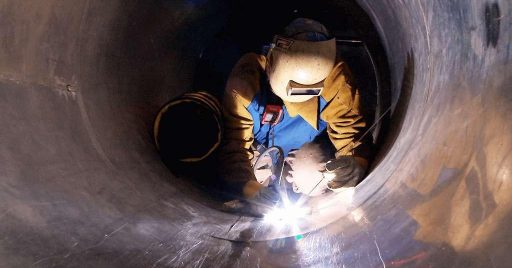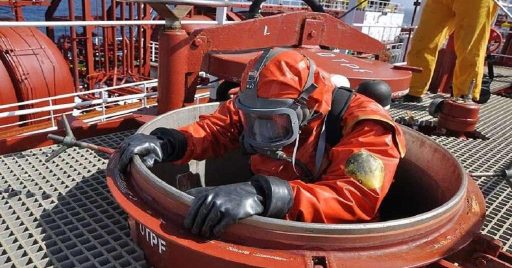Despite current safety measures, refineries still suffer from numerous accidents every year, and limitations of fire and gas detection systems in refineries are one of the causes.
Failure of F&G detection systems usually results in a small or massive fire or explosion. Even if there are no fatalities or injuries, this type of accident costs billions of dollars.
In one instance, in 2019, a massive explosion caused a refinery in Philadelphia to shut down after more than 150 years of operation! Germans in 2018 and Italians in 2016 had similar experiences. Fortunately, these incidents had no fatalities but this is not always the case!
Therefore, HSE managers must be aware of the limitations of fire and gas detection systems in refineries and consider related safety solutions to reduce fire and explosion risks.
The current safety solutions used in refineries to prevent fire and explosion often include portable and fixed gas detection systems as well as open path systems. Even though they all have some advantages that make them applicable in refineries, they also have some limitations.
Table of content
Why should we be aware of limitations of fire and gas detection systems in refineries?
Oil refineries are complex and expensive constructions that supply fossil fuels for many industries throughout the world. Fossil fuels are the dominant energy source in the world, supplying 84% of global demand. In turn, refineries play a vital role in the global economy, and preventing accidents is crucial not only for saving lives, but also for economic growth.
On the other hand, there is high risk of fire and explosions due to combustible and explosive materials used in various refinery processes and flammable products like LPG, gasoline, diesel, jet fuel, fuel oil, and kerosene. Therefore, even the smallest mistake in a refinery can severely damage human lives, property, the environment, and business. So, besides conforming to a number of mandatory regulations, oil refineries utilize a variety of technologies to detect fire, gas, and smoke at an early stage, avoiding a major catastrophe.
The current fire and gas detection solutions used in refineries often involve portable and fixed gas detection systems along with open path system. They all have some advantages that make them applicable for certain situations which in turn pose limitations as they are not productive in other conditions.
Limitations of fire and gas detection systems in refineries can cause failure and result into an disastrous accident. That’s why HSE managers and employers must be aware of these limitations and find new solutions to improve F&G system.
6 limitations of current fire and gas detection systems in refineries.
Refineries rely on various fire and gas detection solutions, from portable to fixed gas systems and open path systems. Each offers specific advantages tailored to certain scenarios but comes with limitations that restrict their efficacy in different conditions.
These limitations within current fire and gas detection systems pose potential risks, leading to failures and catastrophic accidents. It’s crucial for HSE managers and employers to comprehend these limitations, driving the need for innovative solutions that enhance F&G systems.
Outlined below are six key limitations observed in the existing fire and gas detection systems within refineries.
1. Heat generating operations
In oil refineries, like other construction, during some operations especially maintenance, hot works like cutting, welding, grinding, brazing, thawing and soldering must be done. Hot works release heat and spark that increase the risk of igniting a combustible chemical in the air or an explosive material in the close-by area.
The existing safety management system considers some operations to be permit-required. Even though sometimes hot works are being done without permission in an area where f&g systems cannot detect the heat and, since one of the limitations of fire and gas detection systems in refineries is that they are unable to detect heat generated from hot works, fires or explosions may result.

2. Frequent false alarms
False alarms can cause a great amount of cost if the frequency of rogue readings by chemical sensors is considered. Due to the presence of high levels of chemicals in the air in refineries, smoke detectors will raise alarms regularly because they are sensitive to any change in the density of particles. In response, the evacuation process might be initiated which is time-consuming and expensive.
Furthermore, the refineries are often located in areas close to water sources and use huge amount of water in their process that cause high levels of humidity. The water particles in the air may also confuse detectors in raising false smoke alarms. The denser the humid particles, the higher the risk of blocking the light beam from a photoelectric sensor or reacting with the ions in the ionization chamber. Both cases again result in a false alarm. These false alarms are another limitations of fire and gas detection systems in refineries.
3. Confined Spaces
Inspecting confined spaces is very common in refineries as there are maintenance and turn-around schedules on a regular basis. Tanks, ducts, reactors, and vessels are common examples. Being a closed space makes them ideal for gas collection some of which have no odor to be detectable by staff. This creates oxygen deficiency which is fatal in just a few minutes. On the other hand, gases such as H2S, CO, SO2, NO2, H2, NH3, HCl, and Cl2 are toxic to humans.
Hydrocarbon gases also present environmental risk as well as being highly flammable. That is why ‘determination of volatile organic compound leaks’ is always regulated and the appropriate distance between the potential leak source and the gas detector is always maintained. There are some technologies such as catalytic oxidation, photoionization and infrared absorption but they are often utilized by chemical-based fixed gas detection systems. Confined space limits the full utilization of these techs in portable devices and can be considered as one of the limitations of fire and gas detection systems in refineries.

4. Limited range of detection
Both portable and fixed detection systems are limited to the location they are situated. This makes the limited coverage for f&g detectors. However, portable detectors can be worn by operators and move along with them which provides a wider range of view but they are still monitoring only the close-by location. This makes the portable devices suitable for confined spaces that should be inspected.
The fixed devices are also limited to integration with alarm networks for leak detection around high-risk equipment. The desulphurization claus reactor is a good example that needs a detector to sniff for hydrogen sulphide. Gas compressor or volatile liquid pump can also enjoy the service of this system. But it often requires confirmation of open path systems to detect actual danger otherwise the alarm might be just a false alarm!
The open path system is also limited to large zone coverage such as detecting a hydrocarbon gas cloud before reaching the administration building and control room. They are also limited in the number of toxic gases they can detect despite their expensive installation price. The cost will even add up considering the number of locations the devices should be installed.
As a conclusion, area of coverage of all of current devices can be accounted as another limitation of fire and gas detection systems in refineries.
5. Physical obstructions
Birds and trucks are common offenders when it comes to detector beam. They can block the field of sight that might result in missing detection of an actual danger and result in a catastrophic accident. This can result in fatalities and damage to the assets. Components of refinery facilities such as piping, scrubbers, distillation columns, and reaction vessels can also obstruct the line of sight which prevents utilization of full potential in detecting systems.
6. Frequent testing and calibration
Detectors are subject to many environmental conditions that require regular clean-up, maintenance, testing, and re-calibration. Dust particles are just one small example that build up on detectors and smoke alarms. They can prevent accurate detection of actual dangers resulting in accidents that could have been prevented. On the other hand, they might raise false alarms that could have been identified with the accuracy of the system.
These devices also work with batteries that require periodic re-charging in docking stations which make them unavailable for long-term use. They also need to be changed after a pre-determined life span. These testing and maintenance processes are time-consuming and costly and sometimes being forgotten or postponed. Testing and calibration are two of the most important limitations of refinery fire detection systems.
Conclusion
Refinery facilities are filled with combustible gases and materials that just a small spark can ignite a massive fire and explosion. Some of these chemicals are highly toxic to be inhaled by humans or the whole ecosystem. That is why Fire and gas detection systems are installed throughout refineries to prevent such worse case scenarios. But Risk analysis and strategy review are also necessary practices for refineries to identify limitations of current fire and gas detection systems. Even the slightest possibility of danger to humans and environmental heath must be detected before causing any irreversible damage.
The current fire and gas detection systems are limited by present conditions on the site or by their own technology. The location-based limitations along with humidity and chemical particles in the air pose the greatest challenge. Not to mention the presence of heat-generating operations that increases the risk of explosion. Even passing birds or trucks can obstruct the field of detection! The technology is not capable of detecting every possible danger such as all gases or leaks. These limitations of fire and gas detection systems in refineries can put occupational health and safety at risk!
The optimal solution must have high intelligence so all dangers are detected on time, assets are maintained, the environment is protected and most importantly lives are saved. What could that intelligent HSE solution be?!